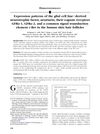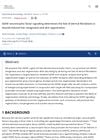Search
forLearn
1 / 1 resultsResearch
5 / 928 results
research Expression Patterns of Glial Cell Line-Derived Neurotrophic Factor, Neurturin, Their Cognate Receptors GFRα-1, GFRα-2, and Common Signal Transduction Element c-Ret in Human Skin Hair Follicles
Certain proteins and their receptors are more active during the growth phase of human hair and could be targeted to treat hair disorders.

research GDNF Neurotrophic Factor Signaling Determines the Fate of Dermal Fibroblasts in Wound-Induced Hair Neogenesis and Skin Regeneration
GDNF signaling helps in hair growth and skin healing after a wound.

research Psychological Stress Impact on Neurotrophic Factor Levels in Patients With Androgenetic Alopecia and Correlation With Disease Progression
Stress worsens hair loss in androgenetic alopecia.

research Multipotent Neural Crest Stem Cell-Like Cells from Rat Vibrissa Dermal Papilla Induce Neuronal Differentiation of PC12 Cells
Rat whisker cells can help turn other cells into nerve cells and might be used to treat brain injuries or diseases.
research GDNF Promotes Hair Formation and Cutaneous Wound Healing by Targeting Bulge Stem Cells
GDNF helps grow hair and heal skin wounds by acting on hair stem cells.
Community Join
2 / 2 resultscommunity Please explain this Minoxidil phenomena
The post discusses the difference in effects of Minoxidil (Min) on scalp and facial hair. The user questions why Min-induced hair growth on the scalp is temporary, while facial hair growth seems permanent, even after stopping Min. They propose theories, including different Min mechanisms on body and facial hair, the role of DHT, and the possibility of not achieving fully terminal hair. The responses include personal experiences and theories about Min's effects on hair growth.
community Why do people here trust Kevin Mann?
Concerns about finasteride's side effects on neurosteroids and brain health, with skepticism towards Kevin Mann's advice. Users discuss using finasteride, minoxidil, and RU58841 for hair loss, with mixed opinions on their safety and effectiveness.